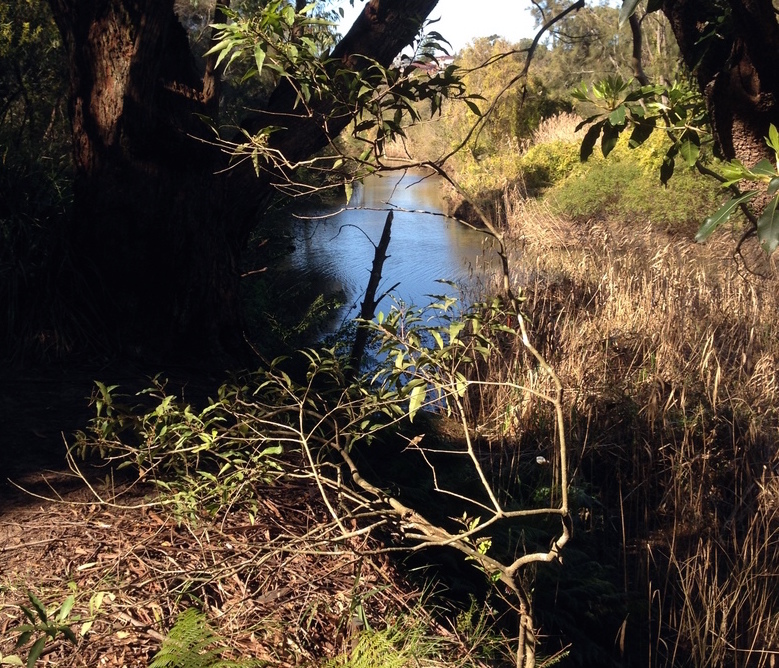Wolli Creek is a wonderland of water, sandstone cliffs and grottoes, wildlife, red gums and wild flowers but its survival is due in no small part to a long struggle against the road lobby by dedicated locals and activists.
Prominent among them is environmental documentary filmmaker Gavin Gatenby who has made a four-part documentary about the heroic struggle between the activists and the road lobby from the 1960s to the present day. I discovered this magical space wedged in between Tempe, Turrella and Bardwell Park this week when I set out to walk the track beside the creek.
Locals have long known about this bushland paradise, but they don’t advertise it. In fact, it took us a good quarter of an hour to find the entrance to the track. Finally one local admitted it was there. “Oh,” he said, “we call it the jungle trail.” Once in there you could believe you are in the Blue Mountains or in the upper reaches of the Georges River.
A park ranger was pulling out weeds and we passed a total of six other walkers during our three-hour trek. How did Sydney keep this secret for so long? I have lived in this city for 50 years and have never heard of the Wolli walking track. Perhaps it is just as well. I am sure that the blue wrens and willy wag tails will be grateful.
Gatenby’s documentary Saving Wolli Creek draws a parallel with the autobahns of Nazi Germany and the Los Angelisation of modern cities, a fashion that was to spread far and wide, and even infected the engineers and bureaucrats as early as the 1940s. During this time government after government planned radial freeways stretching from the CBD to the west, north-west and south-west.
The freeway plans came to a halt in 1974 when students and activists threw themselves at the bulldozers that were tearing down houses in Ultimo to make way for the North-Western Expressway. That campaign saw the occupation by activists of empty houses marked for demolition and the eventual demise of the Willis government. Gatenby has used original footage of the demonstrations against the demolitions.
Not only was the DMR planning to destroy houses and communities in the inner west, but it was also going to remove a large chunk of bushland and green space in Wolli Creek for an 8-lane South-West Expressway (later the M5). The next premier, Labor’s Neville Wran, asked barrister David Kirby to carry out an inquiry into this proposal.
The Kirby report found that freeways and motorways create more traffic problems than they solve, because they change long-term behaviour in favour of road travel. Much later, during the John Fahey government a plan for a rail link to the airport was suppressed and then leaked to the Wolli Creek Preservation Society, which published it widely. The coalition government, which had come to power promising to save the Wolli bushland and had then reneged on the promise, signed off on the airport line in its dying days. The airport rail link is now an integral part of the Sydney metro railway network.
But for the intervention of environmental groups such as the Wolli Creek and Bardwell Valley Preservation Society and Eco Transit, we would have no airport rail line.
Instead there would be an eight-lane freeway from the city to the airport. In fact, Sydney would have lost bushland of incalculable value to future generations.




